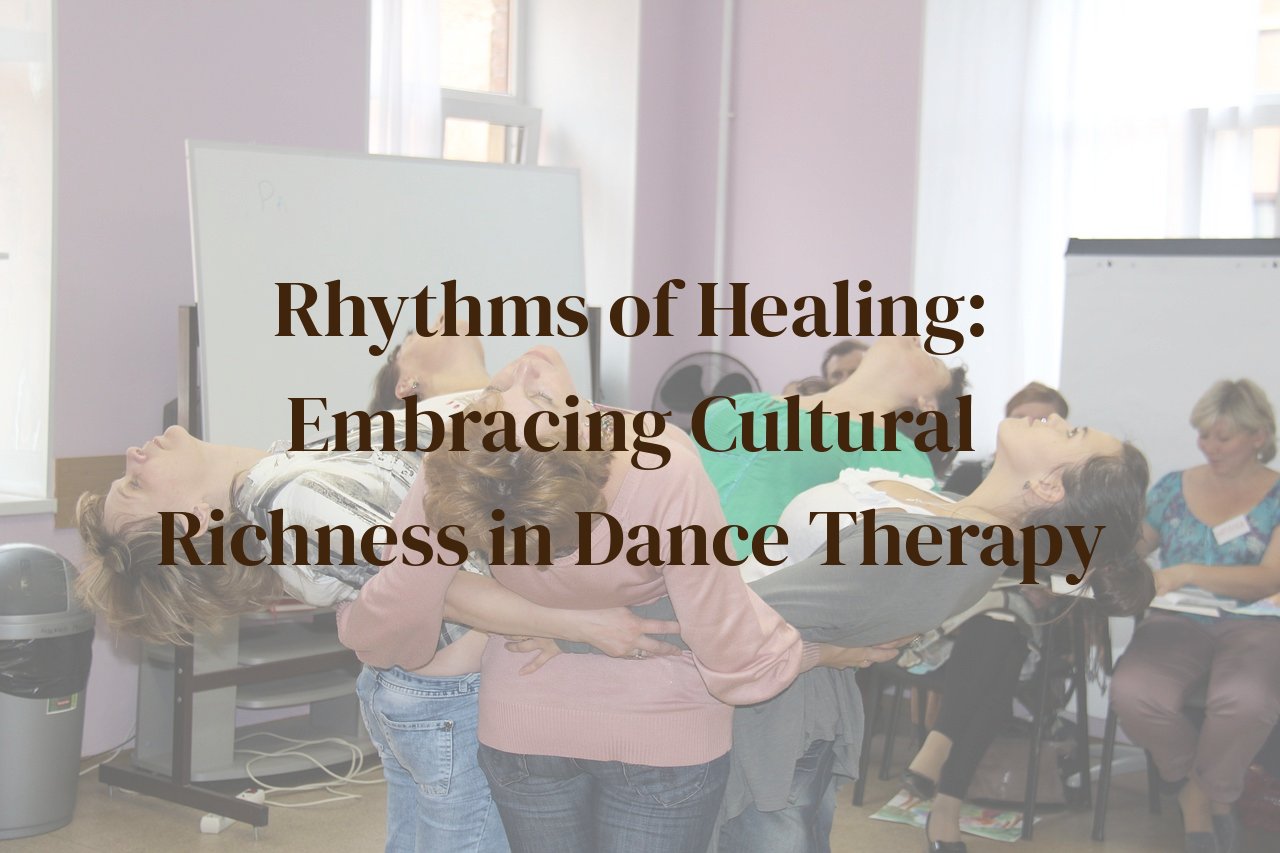
Embarking on a harmonious journey through the movement of the soul, this post will explore the vibrant tapestry that dance therapy weaves with the threads of diverse cultural expressions. Not merely a form of physical exercise, dance therapy serves as a bridge connecting the wisdom of traditions with contemporary healing practices. As we delve into the role dance plays in both personal well-being and the preservation of cultural identity, we uncover how this dynamic form of therapy lends itself to a deeper, more profound level of healing that resonates with the heartbeats of various heritages.
Discover how embracing cultural dances within therapeutic settings can unlock emotional freedom, foster community bonds, and promote holistic health. Whether you are a healthcare professional, a dance enthusiast, or simply looking for a path to better health, the insights shared will illuminate the ways dance therapy can enrich your life and the lives of those around you.
Table of Contents
The Ancient Roots of Dance as Therapy
The art of dance, nestled deep within the annals of history, is far beyond the mere act of movement to rhythm; it is a profound therapeutic modality, forming an intrinsic part of healing rituals and ceremonies across various ancient cultures. As a blogger, I have always been intrigued by how different societies have harnessed the healing powers of dance, often reflecting on my own experiences with its transformative energy.
Tracing back to the shamans of the indigenous tribes, dance was seen not just as a form of entertainment, but as a crucial element in bridging the physical and spiritual worlds. With each step and spin, the shaman would weave together the threads of community and cosmos, channeling healing and harmony. The dances of Sufi Whirling Dervishes, with their hypnotic twirls, are another testament to the therapeutic legacy of dance. These devotional dances exemplify the quest for a mystic union with the divine and inner peace, through the poetry of motion.
In the heart of Africa, traditional dances were conduits of healing, bringing forth the power of ancestral spirits to guide and protect the community. The Maori of New Zealand employ the Haka, a powerful dance known for its fierce display. However, it also serves as a tool to convey stories, celebrate life, and express communal emotions, thus contributing to a societal catharsis. There are the Indian Classical Dances, with their intricate mudras (hand gestures) and expressive facial movements, designed to tell epic tales but also to invoke the deities for spiritual and physical well-being.
My own encounter with the transcendental quality of dance occurred during a visit to Bali, where I witnessed a traditional Balinese healing dance. The performance wasn’t merely for show; it was a conduit for the dancers’ intentions, channeling positive energy and restoration to the audience. It was a dance of soul and spirit, deeply moving and viscerally engaging all who were present. The conviction in their movements and the intent behind each gesture underscored the ancient belief in dance as a viable and vibrant tool for healing.
These diversified practices across continents echo a universal truth: dance, as an ancient form of therapy, transcends cultural boundaries and temporal confines. It is a primal, yet sophisticated form of human expression and connection that actively engages the body, mind, and soul in the pursuit of well-being. As this art form continues to evolve, its roots in healing and spirituality remain steadfast, reminding us that every culture holds a unique rhythm of healing within its dance traditions.
Embodied Storytelling: Dance as Cultural Narrative
Throughout my journey in the exploration of dance therapy, I’ve been deeply moved by the profound ways in which dance serves as a vessel for storytelling. It is not just mere movement, but a rich tapestry of cultural history, personal identity, and communal narrative that speaks to the soul. In many cultures, dance is used to pass down stories from one generation to the next, weaving a continuous thread that links the past to the present. This form of embodied storytelling allows for emotional expression that transcends the barriers of language, capturing the nuances of human experience in its most raw form.
Consider the intricate gestures of Bharatanatyam, an Indian classical dance which tells the tales of the gods and goddesses. Each movement is laden with significance, each facial expression a word in a language of its own. It’s in these details that the narrative unfolds, allowing the dancer to become a living embodiment of cultural mythology. Or take the powerful stomps of the Haka, a traditional Maori dance that conveys the community’s history, resistance, and pride. These dances are not just performances; they are the very pulse of cultural memory.
From my personal engagements with Flamenco, I’ve witnessed how the rhythms and fierce footsteps narrate not just universal emotions such as joy, sorrow, and passion but also echo the story of a culture’s struggle and resilience. The dance floor becomes a ground where personal stories meld with collective history, creating an intimate yet shared experience. It’s this unique blend of personal vulnerability and collective strength that enables both the dancer and the observer to experience a profound sense of connectivity and understanding through the narrative power of dance.
Embodied storytelling in dance, therefore, serves as a valuable tool in therapy, where individuals from diverse cultural backgrounds can find voice and healing. By engaging in the stories that dance movements tell, people can reconnect with their heritage, bridge gaps created by displacement, and discover a shared human experience. It allows for the expression of that which cannot be spoken, providing a powerful outlet for the hidden narratives within us all.
The Psychological Impacts of Cultural Dance Forms
The intersection of dance therapy and cultural expression is a fascinating vista filled with vibrant hues of human emotion and psychology. My journey through the tapestry of dance and its therapeutic effects has led me to appreciate the profound psychological impacts that cultural dance forms can have on individuals and communities. These are not simply movements; they are deeply embedded rituals that mirror the inner workings of our minds and hearts.
Take, for example, the sheer joy and release one can experience from an energetic samba session. The rhythm and communal energy of this Brazilian dance form have the potential to elevate mood, enhance self-esteem, and reduce depression. The visceral connection with the music and the emphasis on hip movements can liberate feelings of happiness, fostering an environment where psychological wellbeing becomes the focus.
Furthermore, the intricate footwork and serene expressions characteristic of classical Indian dance forms like Bharatanatyam can have a grounding effect. The concentration required to perform these dances is akin to a moving meditation, providing dancers a respite from the chaos of their internal dialogues. It is in this stillness that the psychological transformation begins—from anxiety to tranquility, from turmoil to peace.
Another example is the storytelling inherent within African dance. It brings forth a rich historical and emotional backstory unique to its cultural context. This transmission of heritage and personal narratives can strengthen identity and provide a sense of belonging, thereby combating feelings of alienation and loneliness that are all too prevalent in today’s society.
The therapeutic utility of cultural dance forms lies not only in the physical motion but in the emotional resonance they bring about. For many, dance offers a sense of pride in one’s history—a reaffirmation of identity that is both healing and empowering. It forges not just a bodily connection but a link between generations, creating a language through which our collective grievances and triumphs are aired and celebrated.
Thus, the psychological impacts of cultural dance forms are multifaceted and deeply intertwined with our emotional landscape. As I have personally witnessed in therapeutic dance sessions, participants start to uncover layers of themselves that have been dormant, engaging in a form of cathartic self-expression that no amount of verbal therapy could touch. It’s a testament to the power of cultural expression weaving through the melodies of dance to effect psychological change and enrich the narrative of our lives.
Integrating Cultural Diversity into Therapeutic Dance Practices
Embracing cultural diversity in the realm of therapeutic dance is not merely a trend but a heartfelt journey towards acknowledging and honoring the rich tapestry of human expression. In my experience traversing the art of dance therapy, I’ve discovered an important truth: when one integrates a wide array of cultural dances, they craft a haven for emotional liberation and healing. Diverse dances imbue therapy with unique rhythmic languages, gestures, and narratives that resonate deeply with individuals from various backgrounds.
To foster an environment of inclusion, I encourage the incorporation of traditional dances, each acting as a portal to cultural introspection and community bonding. For instance, implementing the elegant fluidity of traditional Japanese dance can bring forth a sense of tranquility, while the vibrant energy of West African dance may liberate and empower. As a practitioner, I weave these forms thoughtfully into sessions, ever mindful of the cultural significance and the potential for promoting mental well-being amongst my clients.
Moreover, engaging with cultural diversity in dance therapy requires a sensitive and informed approach. I dedicate time to understand the cultural roots and contexts of the dances I include, thereby avoiding superficial representation and ensuring that my clients’ cultural identities are respected and celebrated. Collaborating with cultural consultants and constantly learning from diverse groups has greatly enriched my practice, infusing it with authenticity.
The impact is palpable. Clients recount how being able to dance stories of their ancestors, or merely witnessing their cultural tales in motion, connects them to a lineage of strength and resilience. This connection, in turn, becomes a source of psychological nourishment and healing. From personal observation, clients who engage with their own culture’s dance forms exhibit a heightened sense of pride and identity, which can have profound therapeutic effects.
Lastly, there’s a collective alchemy that occurs when people unite through the shared language of dance. Community workshops that blend various cultural dances create a mosaic of movement, encouraging participants to explore each other’s heritages while co-creating a communal narrative of acceptance. It’s through the pulse of the collective beat that individuals find a common ground, transcending cultural divides to celebrate human connectivity and the universal impulse to heal through movement. As I look back on the collaborative dances that have unfolded in my sessions, it’s clear that the communal spirit of dance can indeed mend bridges and nurture hearts, across all walks of life.
Community, Connection, and Collective Healing through Dance
As a vibrant tapestry of human expression, dance therapy is not just an individual journey, but a communal endeavor that fosters connection, builds community, and facilitates collective healing. Within the pulsating circles of rhythmic movement, each participant’s story intertwines with others, creating a shared narrative that is both personal and universal.
In many cultures, dance is a social glue that binds people together during celebrations, rituals, and ceremonies. As a professional blogger delving into the interplay of dance and therapy, I have observed firsthand how this communal aspect transcends cultural boundaries. The shared physical space and synchronized movements inherent in dance foster a sense of belonging, engendering a supportive environment that is crucial for emotional recovery and resilience.
The ritualistic nature of cultural dance forms acts as a catalyst for community-based healing, making it a powerful tool for addressing collective trauma. Often, the stories that are told through the body’s language reflect the history, strife, and ultimate triumphs of a community. Healing through dance becomes a source of empowerment, serving to both honor traditions and renew the collective spirit. In these sessions, dancers are not merely performing steps; rather, they are engaging in a dialogue surcharged with symbolic meanings and shared experiences.
Moreover, dance therapy’s community-oriented approach can serve as a bridge connecting different generations. Elders pass down movements infused with ancestral wisdom, while the younger participants add their dynamism, creating a timeless continuity of cultural expression. This intergenerational exchange enriches the therapeutic experience, leaving indelible footprints on the journey towards healing.
Ultimately, when people come together in the dance therapy space, they coalesce into a microcosmic representation of society at large, reflecting the potential for greater harmony and understanding. The circle becomes a sanctuary where the heartbeats of its members harmonize, their collective energy transcending individual limitations and fostering a profound sense of communal well-being.
Conclusion
In conclusion, the confluence of dance therapy and cultural expressions is a testament to the power of movement as a universal language of healing. As we’ve journeyed through the significance of dance as a tool for psychological well-being and cultural affirmation, it is clear that integrating these practices can enrich the therapeutic experience. By honoring the cultural narratives embodied in each step and rhythm, we pave the way for a more inclusive approach to health care, one that celebrates diversity and fosters a global sense of community. May the rhythm of this knowledge guide you towards a path of health that is both culturally resonant and therapeutically profound.



